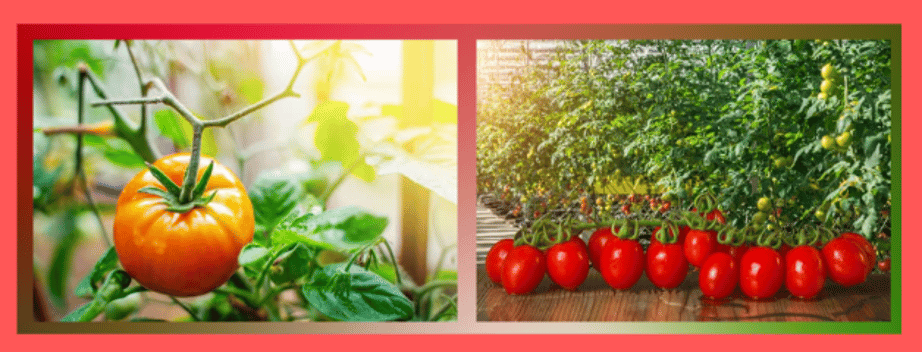The Effects of Greenhouse Growing on Tomato Crops
Introduction:
Tomatoes are a popular and versatile crop, enjoyed by many for their flavor and nutritional value. When it comes to growing tomatoes, farmers and gardeners have the option of cultivating them in a greenhouse or in outdoor settings. In this article, we will explore the differences between growing tomatoes in a greenhouse and outside, considering factors such as yields and the time of year, to determine which method is preferable.
- Yields:
Greenhouse cultivation offers several advantages when it comes to tomato yields. Greenhouses provide a controlled environment where temperature, humidity, and other factors can be adjusted to create optimal growing conditions. This controlled environment reduces the risk of exposure to pests, diseases, and adverse weather conditions, resulting in higher yields and a more consistent crop. Additionally, greenhouse-grown tomatoes often have a longer growing season, allowing for multiple harvests throughout the year. In contrast, outdoor cultivation is more reliant on natural conditions, which can be unpredictable and may lead to lower yields and a shorter growing season.
- Growing Conditions:
Greenhouses provide tomatoes with a stable and favorable environment, allowing growers to extend the growing season and optimize plant growth. The controlled climate inside a greenhouse protects tomatoes from extreme temperatures, frost, heavy rain, and wind, creating a more stable and favorable environment for cultivation. This controlled environment also reduces the risk of pests and diseases, providing a healthier growing environment for the plants. In contrast, outdoor cultivation is subject to the changing seasons and environmental factors that may be less favorable for tomato growth.
- Time of Year:
Greenhouse cultivation allows tomatoes to be grown throughout the year, regardless of the external weather conditions. By maintaining a controlled environment, greenhouse growers can manipulate temperature, light, and humidity to create conditions suitable for tomato growth, regardless of the season. This enables farmers to have a more consistent tomato supply and meet market demands. Outdoor cultivation, on the other hand, is more dependent on the natural growing seasons and may be limited to specific times of the year, resulting in a more seasonal availability of tomatoes.
- Flavor and Quality:
While greenhouse-grown tomatoes can offer a longer growing season and higher yields, some argue that the flavor and quality of outdoor-grown tomatoes are superior. Outdoor tomatoes benefit from natural sunlight, rainwater, and the influence of the surrounding environment, which some believe contribute to enhanced flavor and taste. However, advancements in greenhouse technology, such as light diffusion and careful nutrient management, have allowed growers to produce flavorful tomatoes within controlled environments, narrowing the flavor gap between greenhouse and outdoor cultivation.
Conclusion:
When it comes to growing tomatoes, both greenhouse and outdoor cultivation methods have their advantages and considerations. Greenhouse cultivation offers higher yields, extended growing seasons, and protection from pests and adverse weather conditions. It allows for greater control over the growing environment, resulting in more consistent and reliable tomato production. Outdoor cultivation, on the other hand, may provide tomatoes with a distinct flavor profile influenced by natural conditions.
Ultimately, the choice between greenhouse and outdoor cultivation depends on various factors, including the grower's objectives, market demands, and available resources. Greenhouse cultivation is preferable for those seeking higher yields, year-round production, and protection against external factors. Outdoor cultivation may appeal to those who prioritize the natural flavor and quality associated with tomatoes grown in open fields. By considering these factors, growers can make an informed decision to suit their specific needs and preferences.










